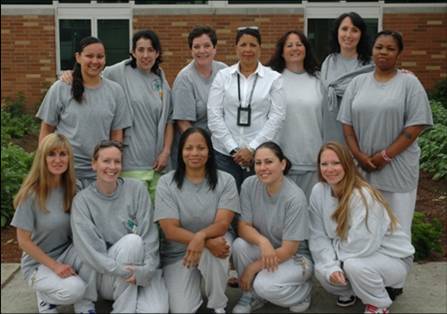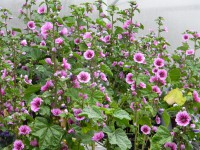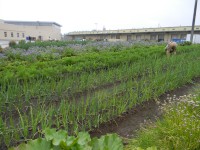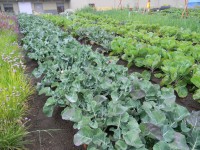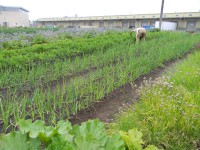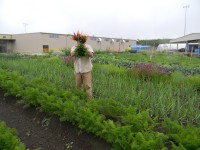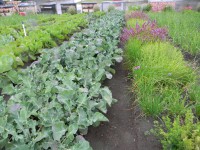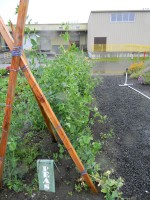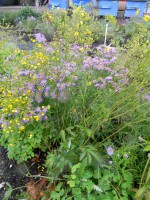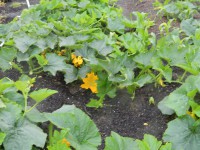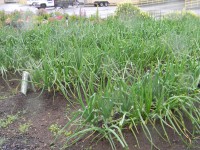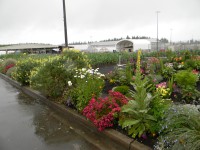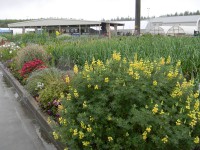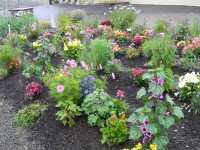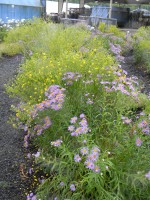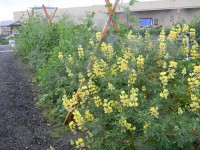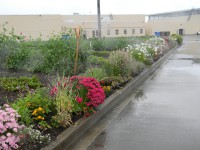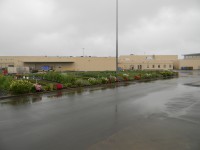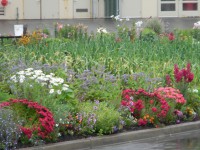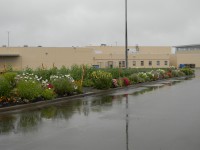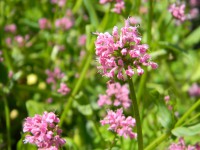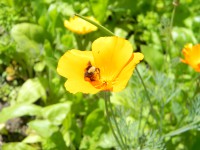by Bri Morningred, SPP Graduate Research Assistant and SPP Coordinator for Washington Corrections Center for Women (WCCW) conservation nursery
photos by Shauna Bittle

Heading out for a tour of SPP programs, passing the gorgeous gardens at WCCW
It was a beautiful day in Gig Harbor, WA, perfect for the celebration of the amazing sustainability programs at Washington Correction Center for Women (WCCW). We had prepared for the celebration for months, and it was gratifying to share with partners and the public the many contributions offenders have made to a sustainable prison community.

Restoration and Conservation Coordinator Carl Elliott describes the SPP conservation nursery program at WCCW
The tour began with introductions from the superintendent of WCCW, Jane Parnell, and from Carri LeRoy and Carl Elliott of SPP. The tour’s first stop was the Conservation Nursery hoop houses at the minimum security campus. Attendees had a chance to watch the conservation nursery crew at work, walk through the carpet of Indian paintbrush (Castilleja hispida) that was beautifully in bloom, and speak with the SPP staff and offender technicians about the conservation nursery program.

Outside and inside of one of the hoop houses in the conservation nursery

Scott Skaggs, Construction and Maintenance Project Supervisor and WCCW manager of the conservation nursery crew, demonstrates monitoring for insect damage on Indian paintbrush

SPP Graduate Research Assistant Bri Morningred enjoys a high five with an offender technician in the conservation nursery

Indian paintbrush thriving in the conservation nursery
Next up was the community gardens on the way to medium security campus. This leg of the tour was led by Ed Tharp, who runs the Horticulture Program at WCCW. These gardens are in the courtyard area of the minimum security campus and grow a variety of foods that are harvested for the prison’s kitchen.

Ed Tharp, Tacoma Community College, runs the horticultural program at WCCW
The final tour stop was in the concrete courtyard of the medium security campus. Located next to the education building—which houses the horticulture classroom, the floral program, and many other wonderful educational programs—there are various garden beds growing onions, garlic, and strawberries.

Enjoying the strawberry beds at WCCW

Assistant Superintendent for WCCW David Flynn, the champion of many SPP programs for the facility, talks to the group about recent activities

The tour visits gardens in the close custody area of WCCW; Audrey Lamb, Conservation Assistant at the Center for Natural Lands Management, in the foreground
We ended with a poster session and awards ceremony in the gymnasium. We ate prison-grown salad and strawberries and cupcakes decorated with prairie flowers. Attendees toured informational tables for many of the sustainable programs at WCCW, including the Prison Pet Partnership Program, Mother Earth Farms, the Horticulture Program, Food Services, the Recycling Program, Sustainability in Prisons Project, and Center for Natural Lands Management.

SPP’s Carl Elliott receives fresh garden salad at the poster session

Melissa Johnson, publicity and outreach for WCCW, admires the horticultural program display at the poster session

Best cupcakes ever! SPP’s Bri Morningred collaborated with a local bakery to produce native plant-decorated cupcakes for the celebration. They also tasted great!

Jane Parnell, Superintendent of WCCW, presents an offender technician with a certificate of appreciation at an awards ceremony

An offender technician on the conservation nursery crew shows a certificate of appreciation recognizing her dedication to the program
It was wonderful to get to recognize the amazing things happening at WCCW. The prisons community is taking great strides toward sustainable living and it is inspiring to work with them towards that goal.
